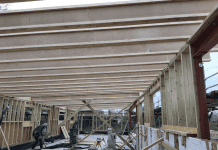Dorothy Edgar, on behalf of Modelling Architecture, explores which dispute issues are most common, and to provide guidance on how you can resolve them as painlessly as possible
It’s a well-known fact that dispute issues are rife in the construction industry, and this can be a costly affair for all parties involved. Research from Arcadis shows that in 2018 alone, the value of construction disputes reached a value of £14.13m in the UK.
Errors in design
Solving disputes surrounding design errors can be complicated depending on which stage of the construction process you are in. Architectural design errors can also be costly to fix, therefore, it’s important to ensure all parties are on the same page early-on.
Prevention is often better than a cure. As a result, it’s crucial to ensure that the design plans are thoroughly checked by contractors and construction workers before the build begins. This will help you to spot any glaring errors in due course. Architects are happy to amend plans when needed, as this ensures the end result is completed to the highest possible standard.
Differing goals
If an architect is employed for a large construction project or contract, it’s likely that there are a whole host of sub-contracted firms involved in the build. When this happens, each firm or contractor may have different goals in mind, which can cause issues further down the line.
For example, the architects’ goal may be to keep costs as low as possible, whereas, the contractors may want to minimise the environmental impact of the project, which could involve using more expensive building materials.
Communication and collaboration is key to solving and preventing disputes of this nature. Competition is rife in the construction industry, therefore, it can be a challenge to find a group of firms with the same overarching goals. But, taking the time to discuss the outcomes of the project with all parties will help to ensure the project is completed without a hitch.
Project delays
Project delays can cause a great amount of stress for architects, contractors and construction workers. The longer a build goes on, the more it will cost, therefore, it is in the clients’ best interest that the build is completed on time. However, factors beyond the clients’ control can often impact the completion date.
Usually, dispute issues arise when responsibility comes into the question; who is responsible for the delays? In many cases, notice is given by the contractors if there are due to be any delays, and there are also provisions in the construction contract itself.
Again, communication is the best remedy for these types of situations. That way, the client can decide the right course of action for any delays, rather than being surprised further down the line.
If the contractors fail to give enough notice to complete the project, it must be finished within the original timescale to avoid any legal consequences.
Fees
In most cases, issues arise when the architect’s work has not been clearly defined, the client disagrees with the final fees, or the client wants to change the plans. This can cause even more complications with the contractors and construction workers, as any changes can impact the build time and overall quality of the project.
In order to solve this, it’s important to clearly outline the work that will be provided in the contract, as well as the added costs of any changes or amendments. Keeping contractors in the loop will also help to spot any potential causes for delays early on.
Project quality
Disputes can also arise if the work completed is not up to scratch, or it doesn’t abide by architects’ design and specifications. This is a complicated issue to fix once the build is finished, as remodelling and demolition is a costly process.
It’s important to manage expectations amongst the architects, contractors and workers from the very beginning of the project. Contracts should clearly detail the work that is going to be carried out, the quality of the materials to be used, detailed architectural design and more to ensure that all parties have a clear idea of the outcome of the build.
Tools such as building information modelling help to collate all of this information in one place, and avoid discrepancies between the expected outcome and the actual outcome.
In most of these cases, communicating needs clearly can help to avoid any costly disputes arising further down the line. If architects, contractors and construction workers maintain an open dialogue throughout the construction process, it’s likely that the build will go ahead without any major problems.
The nature of the industry means that disputes can arise during any part of the design and build process. However, taking the time to resolve these issues will allow you to reap the rewards of a stress-free build further down the line.
Dorothy Edgar

















